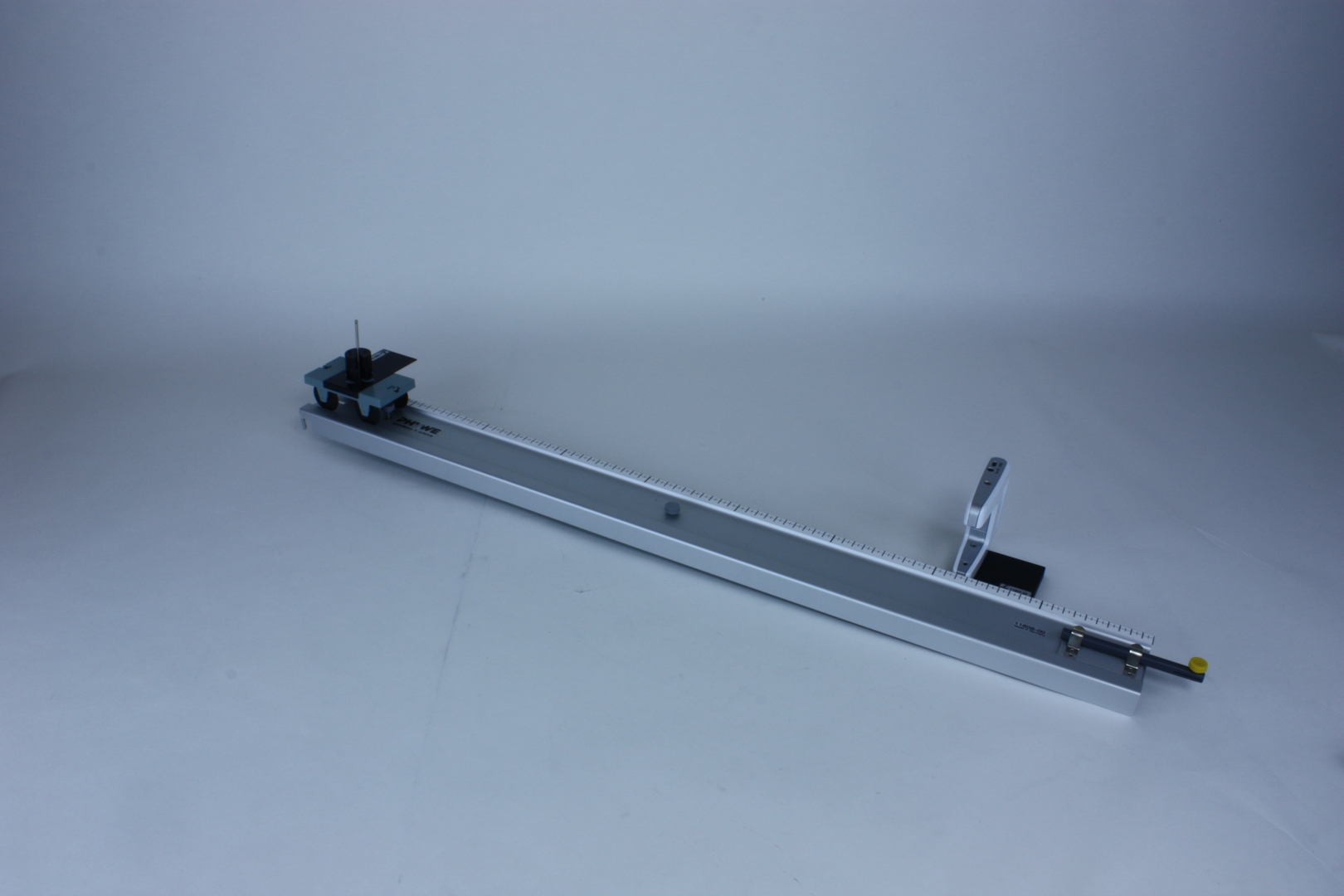Principle
The measuring carriage on the roadway is accelerated by a mass, which is connected to the carriage via a deflection roller with a thread, and a force is generated in the gravitational field until shortly before the end of the roadway (this is when the weight hits the ground). Energetically speaking, the final speed of the car simply follows from the law of conservation of energy.
Benefits
- Especially understandable and didactically prepared description of the experiment (relevance to everyday life, etc.) including protocol questions.
- Future-oriented teaching: Integration into digital science lessons with tablets or smartphones.
- Increased motivation of students by using the intuitive measureAPP.
- Increased media competence.
Tasks
- The students let a carriage, pulled by a weight over a pulley, roll over the track. At the end of the track there is a forked light barrier, which determines the shading times of the wagon and thus its speed. For this purpose the acceleration path of the carriage is varied.
- From the acceleration distance (which is equal to the height difference of the weight) the students calculate the potential energy and apply it over the squared speed. The gradient of the now linear path is to be determined by the students from the diagram.
Learning objectives
In this experiment, the students are to understand and investigate the conversion of potential energy of the situation into kinetic energy. Thereby all students shall recognize the statement of the law of conservation of energy. The students should recognize the proportionality of the kinetic energy to the square of the velocity and determine the proportionality factor from the measured values.


